Illusion of Face 2
since November 16, 2007
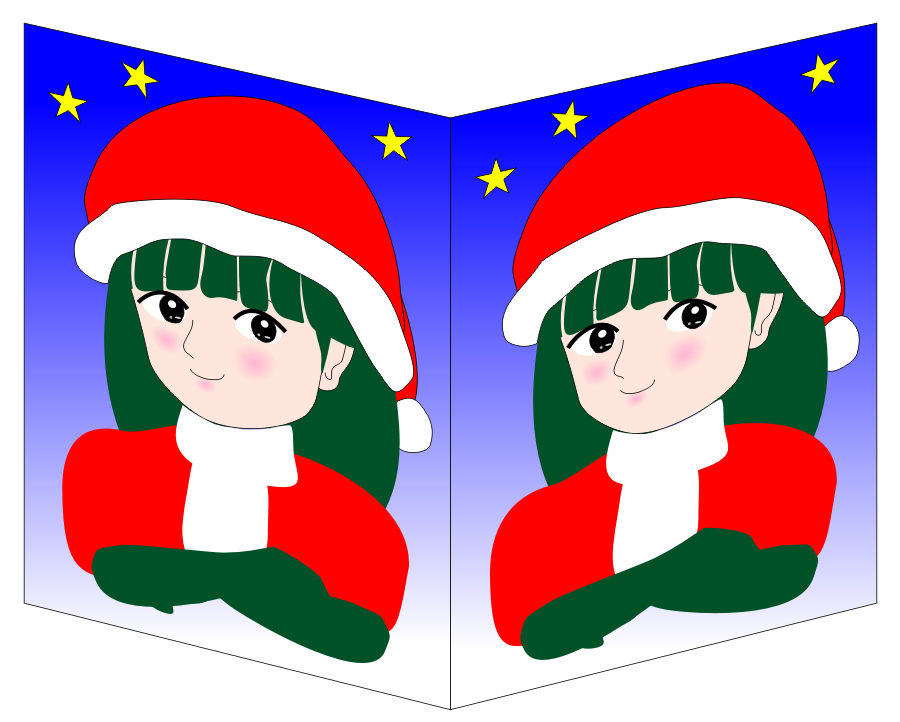
"Transformation that does not change the apparent eye direction: Christmas 2007 version"
Apparent eye direction is not changed much by transformation that does not give any depth cue. Both appear to gaze at the observer.
Copyright Akiyoshi Kitaoka 2007 (December 19)
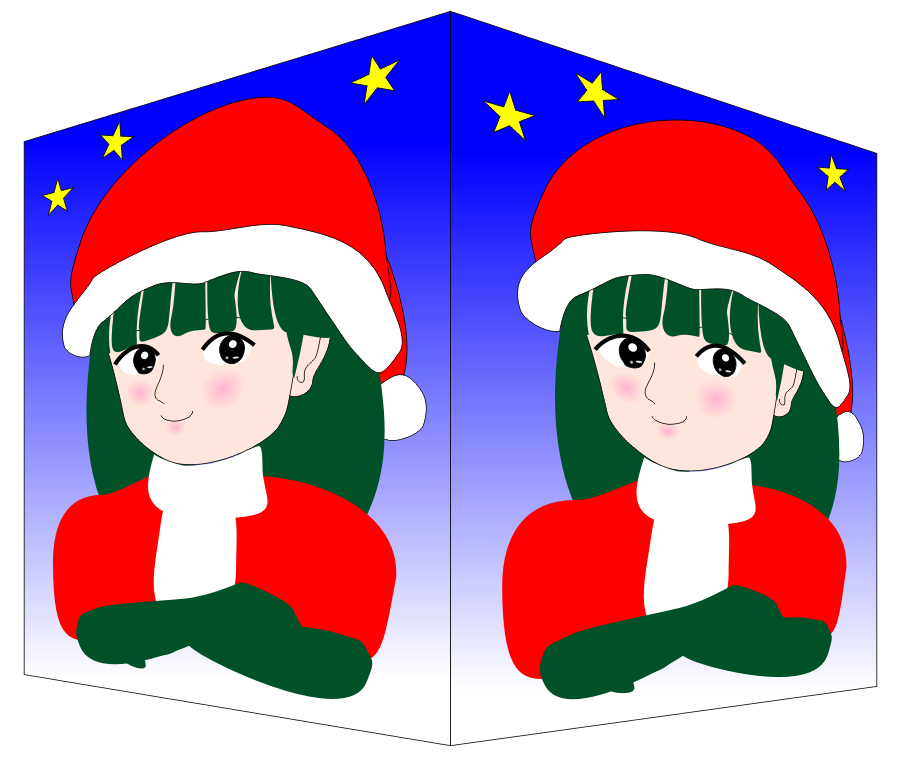
"Transformation that does change the apparent eye direction: Christmas 2007 version"
Apparent eye direction is changed much by transformation that gives some depth cue. The left face appears to gaze at the observer while the right appears to see leftward (for her).
Copyright Akiyoshi Kitaoka 2007 (December 19)
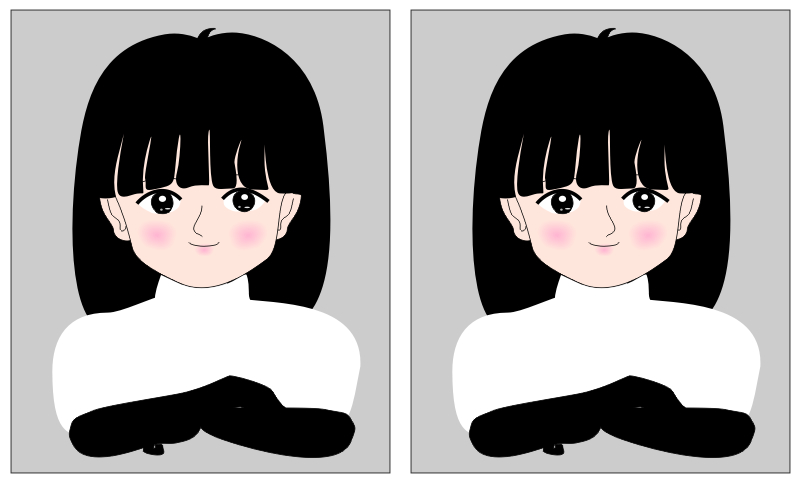
"Wollaston illusion induced by the nose only"
Although the left face is identical to the right one except the direction of the nose, the left face appears to gaze at the observer while the right one appears to see slightly leftward.
Copyright Akiyoshi Kitaoka 2007 (December 19)
cf.
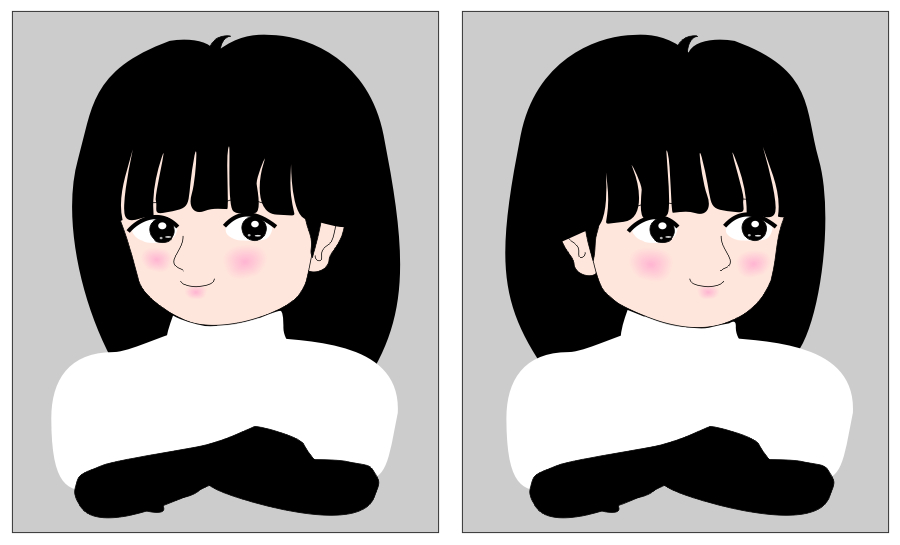
"Wollaston illusion"
The left face appears to gaze at the observer while the right one appears to see leftward (for her), though the eyes are identical between them. This phenomenon was proposed by Wollaston (1824).
Copyright Akiyoshi Kitaoka 2007 (December 20)
Wollaston, W. H. (1824) On the apparent direction of eye in a portrait. Philosophical Transactions of the Royal Society of London, B114, 247-256. (I do not have the copy, so I have not confirmed this paper yet)
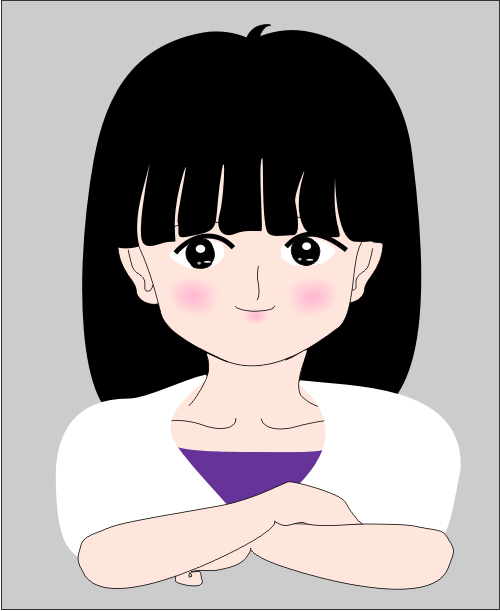
"Eye direction aftereffect by shifting eye lids"
After watching a person who sees the right, the observer perceives the gaze of the person who sees the observer to direct leftward. This animation consists of a 10-s adaptation image and a 1-s test image. The Eye direction afterefect (EDAF) was proposed by Seyama and Nagayama (2006).
Seyama, J. and Nagayama, R. S. (2006) Eye direction aftereffect Psychological Research, 70, 59-67.
Copyright Akiyoshi Kitaoka 2007 (December 18)
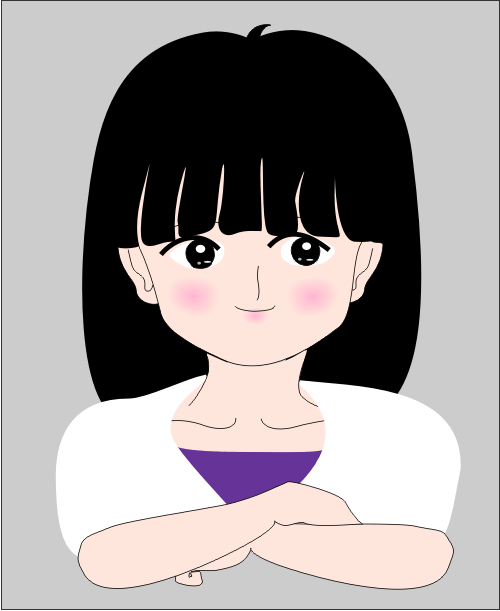
After watching a person who sees the left, the observer perceives the gaze of the person who sees the observer to direct rightward. This animation consists of a 10-s adaptation image and a 1-s test image.
Copyright Akiyoshi Kitaoka 2007 (December 18)
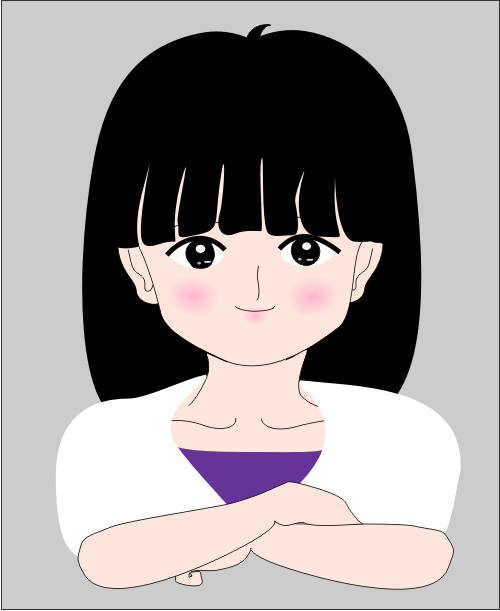
The test image of the two animations shown above
cf. Professor Simon Baron-Cohen, well-known for the study of autism, assumed the eye direction detector (EDD) (Baron-Cohen, 1995a, 1995b).
Baron-Cohen, S. (1995a). The eye direction detector (EDD) and the shared
attention mechanism (SAM): Two cases for evolutionary psychology. In C.
Moor & P. J. Dunham (Eds.), Joint attention: its origins and role in development (pp. 41-59). Hillsdale, NJ: Erlbaum.
Baron-Cohen, S. (1995b). Mindblindness: An essay on autism and theory of mind. Cambridge, MA: MIT.
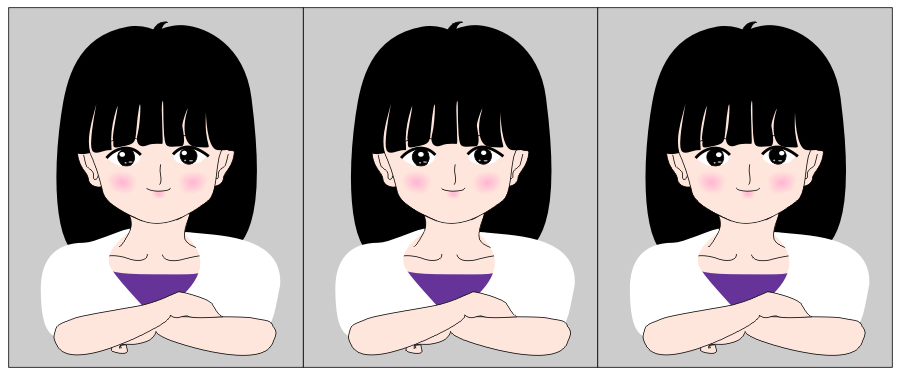
"Purkinje-Sanson image illusion"
Although the position of the iris and pupil in each eye's contour is the same among the three images, the apparent direction of gaze tends to be shifted to the positional bias of the Purkinje-Sanson image, the bright spot shown on the iris (actually on the surface of the cornea).
Copyright Akiyoshi Kitaoka 2007 (December 17)
I guess painters know this tendency.
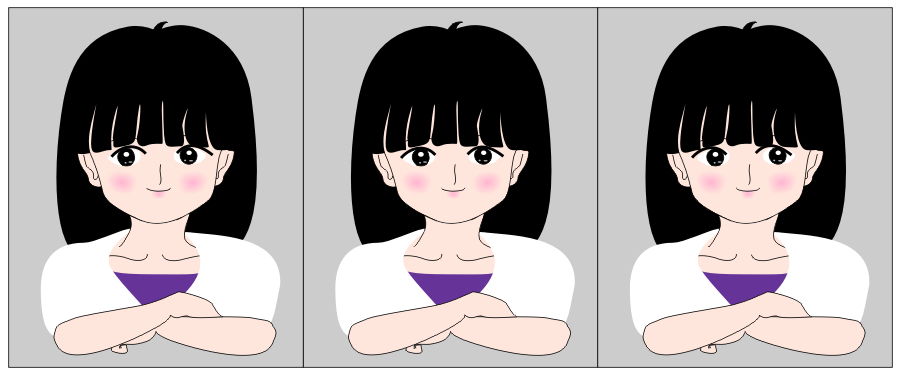
"Eyelid-dependent eye-direction illusion"
Although the position of the iris and pupil in each eye's contour is the same among the three images, the apparent direction of gaze is shifted to the positional bias of the eyelid.
Copyright Akiyoshi Kitaoka 2007 (December 17)
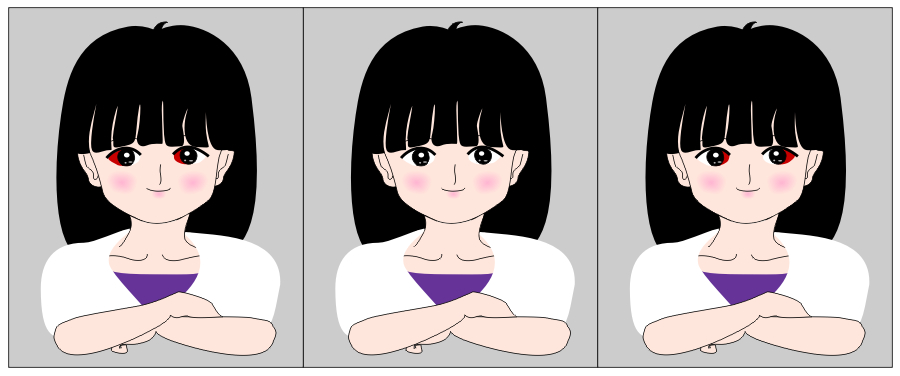
"An illustration of the bloodshot illusion proposed by Dr. Shinki Ando"
The luminance-induced gaze shift or the bloodshot illusion (Ando, 2002). Although the position of the iris and pupil in each eye's contour is the same among the three images, the apparent direction of gaze is shifted to the darkening part of the sclera (the white of the eye).
Copyright Akiyoshi Kitaoka 2007 (December 15)
Ando, S. (2002). Luminance-induced shift in the apparent direction of gaze. Perception, 31, 657-674.
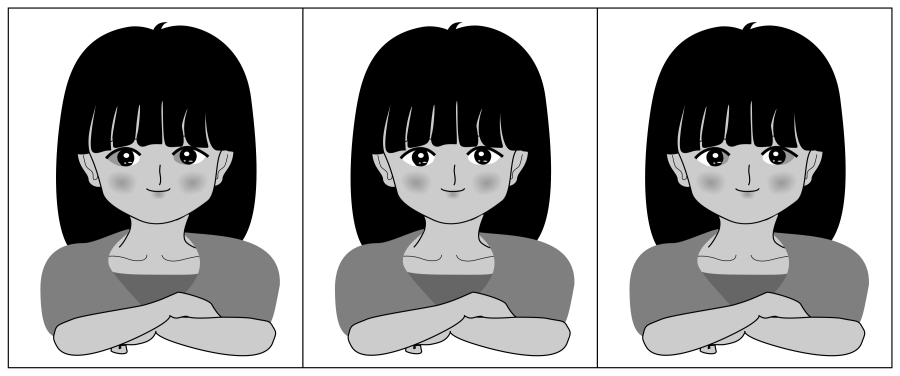
Copyright Akiyoshi Kitaoka 2008 (September 15)
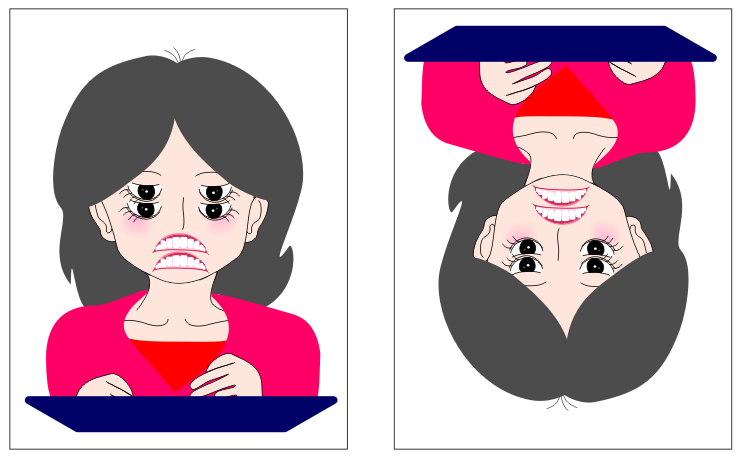
"Attenuation of the 'knocked-face' illusion in an inverted 'thatcherized' face"
The left 'thatcherized' face has four eyes and two mouths. Its appearance is unstable as if the image were knocked or wobbly. Here I tentatively call this illusion the "knocked-face" illusion, which is not what I have discovered. For those who know the correct name of this illusion or the references, please let me know. This illusion is attenuated by inversion of the face as shown in the right face. This finding suggests that this illusion strongly depends on face perception.
Copyright Akiyoshi Kitaoka 2007 (December 11)
For the Thatcher illusion, see the page of the illusion of face.
"An illustration of the Thatcher illusion 2"
The lower image looks like the inverted one of the upper, while these are not mirror images. The difference appears to be more clear when these images are rotated 180º, as shown below. This effect is called the Thatcher illusion (Thompson, 1980). Peter's page
Copyright Akiyoshi Kitaoka 2007 (November 16)
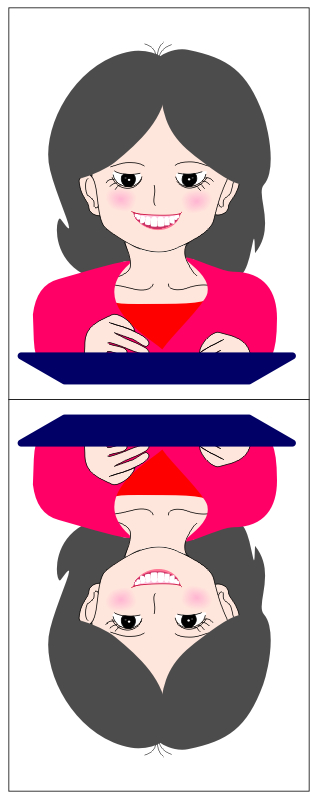
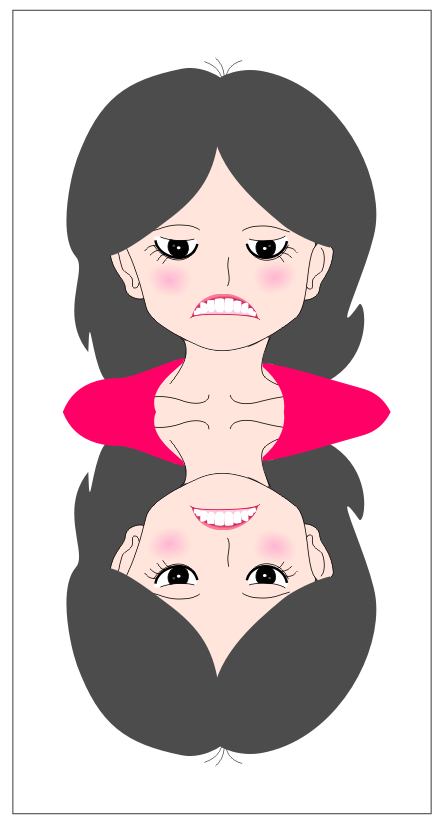
"'Thatcherized' upside-down face overestimation illusion"
The lower face appears to be larger than the upper one though they are identical in size and are "thatcherized" (eyes and the mouth inverted).
Copyright Akiyoshi Kitaoka 2007 (November 16)
For the Thatcher illusion and the upside-down face overestimation illusion, see the page of the illusion of face.